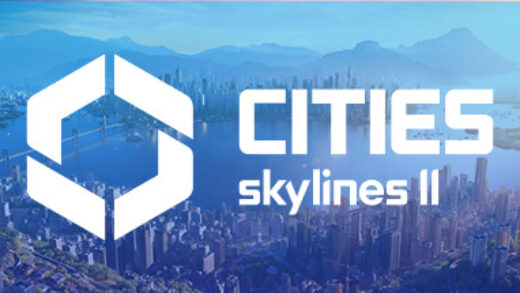Generative AI is sending shockwaves through the business world, due in no small part to powerful tools that are transforming how we live and work. As with prior massive paradigm shifts, successful businesses must adapt for the future.
When businesses infuse cutting-edge innovations like AI into their operations, it can drive sustainable, long-term growth, futureproof them against economic headwinds, and create lasting competitive advantage. While the market dialog is dominated by incredible new AI-driven services, there is untapped value in the hundreds of millions of existing applications that can now be modernized and infused with AI.
Without modernization, organizations may miss out on the full value of their investments, lag behind the competition, or fall prey to costly disruptions—and they certainly won’t be positioned to develop tomorrow’s leading AI innovations. Pitfalls like these are already a reality for many: according to the Forrester study exploring modernization, one in four business decision-makers experienced digital platform failures due to modernization challenges.
Because true modernization can (and should) touch every area of your business, it gets complex, involving everything from processes and systems to orchestration and strategic planning. As a result, many leaders aren’t sure where to begin—which is why we’ve created this blog series to chart a course through modernization with AI readiness in mind.
In this first blog, I’ll cover what modernization really means, why it matters for your business, and how to think about modernization as your path to AI value.
Modernization is a holistic approach
The first step on your modernization journey is to get clear about what differentiates modernization from more piecemeal approaches. Modernization means updating and improving assets across all business areas so they work well with evolving digital software and the cloud. This is a holistic approach that includes people, processes, and skillsets along with data, apps, and infrastructure.
Modernization breathes new life into legacy technologies to prime them for AI
Earlier I mentioned that modernization is critical to the future of your business—let’s give a little background as to why. For decades, businesses grew up alongside purpose-built digital solutions that met the needs of the day. These solutions are now struggling to meet current needs. For example, they can’t easily incorporate the latest AI capabilities because they weren’t built for fast-paced innovation cycles. This tech also often works in siloes and may not be able to process large amounts of data to support the latest intelligent services. Take it from Sapiens, an insurance platform provider across thirty countries: they struggled to innovate because their digital practices were established before they adopted the cloud.
Modernization helped Sapiens overcome these issues and prime their operations for AI innovation by migrating, transforming, and distributing their key applications. This allowed them to accelerate their development processes and their innovation cycle, since developers could devote more time and resources to improvements rather than maintenance.
“Using and investing in Microsoft Azure tools to automate some of our infrastructure and processes, we managed to cut our time to market in half and reduced our operational overhead by at least 40 percent.”—Michael Mirel, Head of Cloud and DevOps Center of Excellence at Sapiens.
They’re not alone—according to an IDC survey on the benefits of cloud migration and modernization, 41% of organizations cite operational efficiency and 30% cite cost savings as the top outcomes achieved. When businesses take this technology posture, they lay the groundwork for AI and analytics innovation and more agile operations.
Modernization starts with the cloud, but it doesn’t end there
Migrating to the cloud is essential (30% of respondents in that same IDC survey reported the cloud eased modernization), but think of the cloud as just one aspect of driving scale, achieving long-term outcomes, and unlocking the potential of technologies like AI.
Take Scandinavian Airline Systems (SAS) as a case study. They incorporated the cloud as part of SAS Forward, a broad strategy to help adapt to changing market dynamics and cost pressures.
“The airline industry is highly competitive, to continue to provide great experiences for travelers, we needed to make big changes.”—Mikael Perhult, Tech Lead, Cloud at SAS – Scandinavian Airlines.
That’s why SAS Forward went beyond cloud migration, modernizing SAS’s databases and apps as a fully managed platform service on Azure.
“We wanted to transform the technologies that support and connect SAS’ systems and services for greater scalability, efficiency, and security, while paving the way for innovation for our customers.”—Prakash Ujjwal, Senior Systems Specialist, IT Infrastructure Services.
Just as SAS went beyond initial migration, they also had to go beyond the tech itself. This meant a thoughtful reimagining of how their operations could be modernized to maximize investment.
Modernization reshapes more than technology
While apps and platforms are essential to modernization, businesses should also align their people, processes, and skillsets to ensure the entire enterprise is working toward the same goal. This is especially true with AI, since it creates a new way of working that disrupts long-standing routines. In other words, AI is both a catalyst for modernization and accelerator of modernization.
The research behind the Forrester Application Modernization Checklist supports this idea. One in five decision-makers reported achieving modernization, and those who succeeded said they did so because they looked at the task holistically. They built a clear strategy around AI and AI training, tied AI closely to business outcomes, and used cross-org metrics to track and measure progress and impact. And crucially, they drew on support from their strategic partners to upgrade their technology stacks—modernization is too important and too complex to tackle alone. SAS embodied this holistic approach by setting goals to transform operations and maintenance, increase overall innovation, and leverage partners to get more out of their initial cloud investments. They succeeded and streamlined developer workflows to enable continuous improvement while modernizing airline operations at scale.
The right modernization approach unlocks competitive advantage
When businesses take a truly holistic approach to modernization, transformative outcomes speak for themselves. Sapiens reports that they’re able to extract deeper insights more easily and drive more effective business decisions, while SAS built an environment that fosters long-term innovation and has improved customer experiences.
I invite you to continue charting a modernization course with me in the next blog in our series. We’ll walk through specific steps for effective modernization identified by the Forrester Consulting Application Modernization Checklist that Microsoft commissioned.
- Download the 2024 commissioned Forrester Consulting study: Unlock Competitive Advantage with Application Modernization.
- Read the accompanying Application Modernization Checklist.
- Learn about the benefits of cloud migration and modernization from IDC.
- Consult the Microsoft Application and Data Modernization: Azure page.
- Visit the Microsoft Azure Innovate site.
The post Achieving AI readiness through comprehensive modernization appeared first on Microsoft Azure Blog.
Remember to like to check out our Windows Server content as well.
Discover more from Windows Mode
Subscribe to get the latest posts sent to your email.















